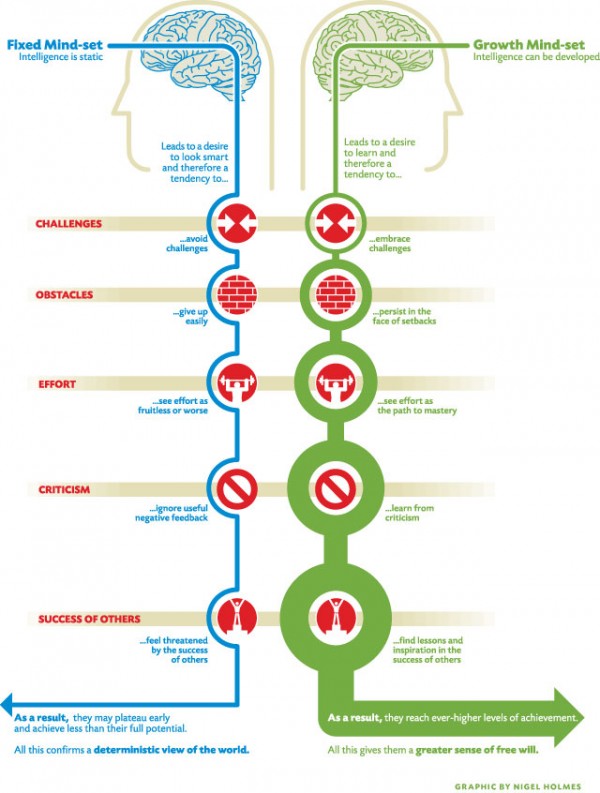Mindset
Much of who you are day-to-day comes from your mindset of your qualities and characteristics.
The two extremes
A fixed mindset comes from the belief that your qualities are carved in stone. Intelligence, personality, and creativity are fixed traits.
A growth mindset comes from the belief that your basic qualities are things that can be cultivated through effort. Everyone can changes and grow through application and experience.
These are the two extremes of the mindset spectrum, and we can lean one way in one area of life, and differently in other areas.
Implications
Fixed mindset creates an urgency to prove yourself over and over. Criticism is an attack on character and is avoided. Makes it hard to work on problems through setbacks. This can turn people into non-learners.
Growth mindset encourages learning and effort. Criticism is valuable feedback and is embraced. Helps to convert setbacks into future successes.
Success
“Smart people succeed,” says the fixed mindset. So we should pick easy problems to succeed in, to validate our smartness. Hard problem leads to failure leads to revealing stupidity.
“People can get smarter,” says the growth mindset. So we should pick the hard problem. Even if we fail, we can learn from the experience and solve the next hard problem better.
There’s still a choice
The growth mindset is a starting point of change, but we ourselves decide where to put our efforts toward change. It helps us develop the skills and capabilities that we want to put the time and effort into.
